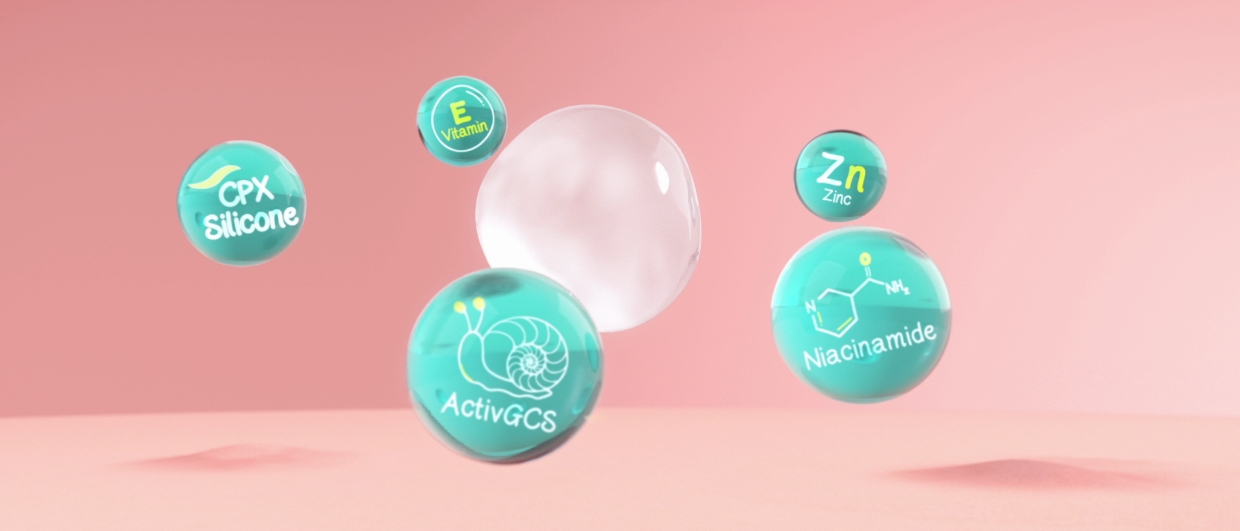Looking for a treatment for your acne scars, but feeling confused over which one to choose?
Knowing how key ingredients benefit your skin not only helps you find the best available option, you'll also get into the useful habit of reading product labels to make wise and informed purchases!
Zinc and Niacinamide
Two of the essential nutrients for your skin's proper functioning, zinc and niacinamide (the active form of niacin or, simply, Vitamin B3) are two such key ingredients to look out for. Zinc is important for cell growth and wound healing1, while niacinamide helps build keratin, a protein that keeps your skin firm and healthy.2

The good news is that you can get zinc and niacinamide in many ways, with the first being to simply incorporate them into your diet. For example, eggs, beans, and milk offer a good dose of both zinc and Vitamin B3.
And when it comes to treating acne scars, zinc and niacinamide are essential.
Zinc's well-known anti-inflammatory properties effectively reduce sebum production and the number of inflammatory papules, thus lessening the severity of acne breakouts.3 What’s more, zinc's exceptional healing properties also enhance the healing process, further reducing the occurrence of acne scarring.1
Not to be outdone, niacinamide is a virtual all-star in skincare circles. This seemingly humble vitamin not only regulates inflammation and sebum in acne, but also protects against UV radiation and reduces skin hyperpigmentation.4
ActivGCS
The third key ingredient for effective acne scar treatment may surprise you – snail slime! In fact, South Korea has been introducing skincare products featuring snail slime since the early 21st century5, leveraging its properties that combat bacteria, while also aiding wound repair and cell proliferation6. These are the very properties that can also rejuvenate skin with acne scars.

You’ll be glad to know, you won’t have to apply snail slime to your face to get rid of acne scars. Dermatix has formulated a proprietary ingredient called ActivGCS, which mimics and reproduces the same healing properties as snail slime. Made from plant extracts to mimic the properties of snail slime, ActivGCS helps to boost collagen and elastin production to keep your skin healthy and moisturised7 – and set you on your way to clearer, smoother skin.
Acne scars can’t stop you, especially with a good acne scar treatment
Specially formulated topical treatments like Dermatix® Acne Scar are powered by these very
same active ingredients – ActiveGCS, zinc, and niacinamide – that work together to both combat acne scars, and
boost your overall skin health and appearance. In addition, two other key ingredients, Vitamin E and Dermatix’s
own unique CPX silicone gel technology, stabilise your skin’s protective barrier7 and shields your
skin from the harshness of the environment to help boost scar recovery respectively.8 Watch this video to find out more.
With its unique blend of active ingredients, Dermatix® Acne Scar helps to lighten dark spots, marks and
scars,9, 10 in as little as four weeks7 – while also preventing the development of new
acne blemishes and scars.7, 11
Best of all, Dermatix® Acne Scar complements your morning and bedtime skincare or make-up routine. After
cleansing and drying your skin, apply Dermatix® Acne Scar to affected areas. Then continue with applying your
toner, moisturiser, or make-up, and you’re all set!
Enjoy your fullest, most confident life with a skincare routine and diet that promotes healthy skin – and with Dermatix® Acne Scar to handle any acne scars that may appear along the way.






